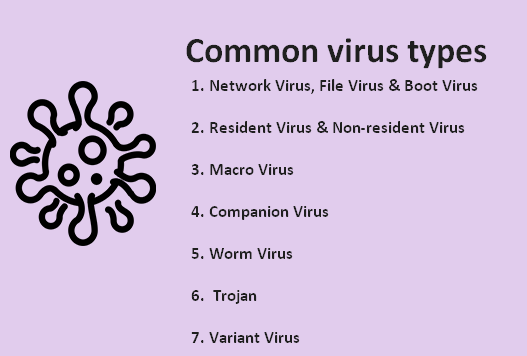You must be disappointed when knowing that all files or some of them are corrupted by computer virus. Definitely, the first thing to consider is how to recover the important data. I advise you to choose MiniTool Software which has high reputation among users. In the following content, I’ll mainly focus on introducing virus types.
Common Types of Computer Virus
What is a computer virus and types of virus?
Undeniably, the virus malware is very annoying. The so called computer virus is actually a set of computer instructions or program codes with self-replication function; they are established in or inserted into computer programs to destroy a single program or even the whole computer system.
Computer virus can be divided into different types according to different factors. Now, I’m talking about the types of computer virus.

Microsoft Warns Malware Is Found In Windows 10 Apps.
It is hard or even impossible to estimate the type and quantity of computer virus. The update rate and reproduction rate of virus is very stunning. Perhaps, tens of thousands of viruses are invading users’ computer every second. I’d like to share some commonly seen viruses here. The types of computer virus are largely depended on the dividing method.
Network Virus, File Virus & Boot Virus
According to the media where it locates, computer virus can be divided into three types:
- Network virus: the network virus attacks executable files in network.
- File virus: it is mainly designed to attack files saved in computer.
- Boot virus: this type of virus often invades boot sector and system MBR.
In addition, there is also mixed virus combined by any two (or all) of the above three types.
Resident Virus & Non-resident Virus
Computer virus can also be classified to resident virus and non-resident virus according to its infection method.
- After resident virus infected a computer, it will leave portion of itself in system memory (RAM) and this part of program will be merged into OS. The resident virus is always active until the computer shuts down or restarts.
- In contrast, the non-resident virus will be activated when getting a chance, but it will not infect computer memory. Some viruses of this type will also leave small part in the memory, but it’s not their transmission channel.
Macro Virus
Macro virus is designed for specific applications. It can be attached to the macro instructions in some applications and is able to spread through email attachment, floppy disk, file download, group software, etc. Written in easy programming language, such as VisualBasic and CorelDraw, macro virus becomes the most popular virus since it had been discovered in 1995.
Companion Virus
The companion virus doesn’t aim at changing the document itself. Instead, it generates companion files in accordance with EXE files, with the same name but different extensions, by using special algorithm. When DOS loads files, the companion files will be loaded firstly and then it will execute the original EXE files.
If you find any files are deleted by virus, please try to recover them at once by using methods mentioned in this page:
Worm Virus
The computer worm spreads through networks without changing documents and other information. By taking advantage of network, it disseminates the virus copies from one computer memory to another. In general, it has no other bad effects in addition to occupying memory. Some worms (such as CodeRed) achieve proliferation and destruction through making use of software bugs.
Trojan
The computer Trojan seems to be very normal, but it will conduct some vicious and wrongful activities when executed. It is frequently used as a tool for hackers to steal users’ password information and destroy data or programs in hard disk. Trojan does not replicate itself, on the contrary, it induces computer users to install the programs or download files infected with it.
Variant Virus
Variant virus is also known as the Phantom Virus. This type of virus uses a complex algorithm to make each of their own copy spreading with different content and lengths. It is often made up from decoding algorithms mixed with unrelated instructions and variant virus.
Till now, you must know what is computer virus and its types.
